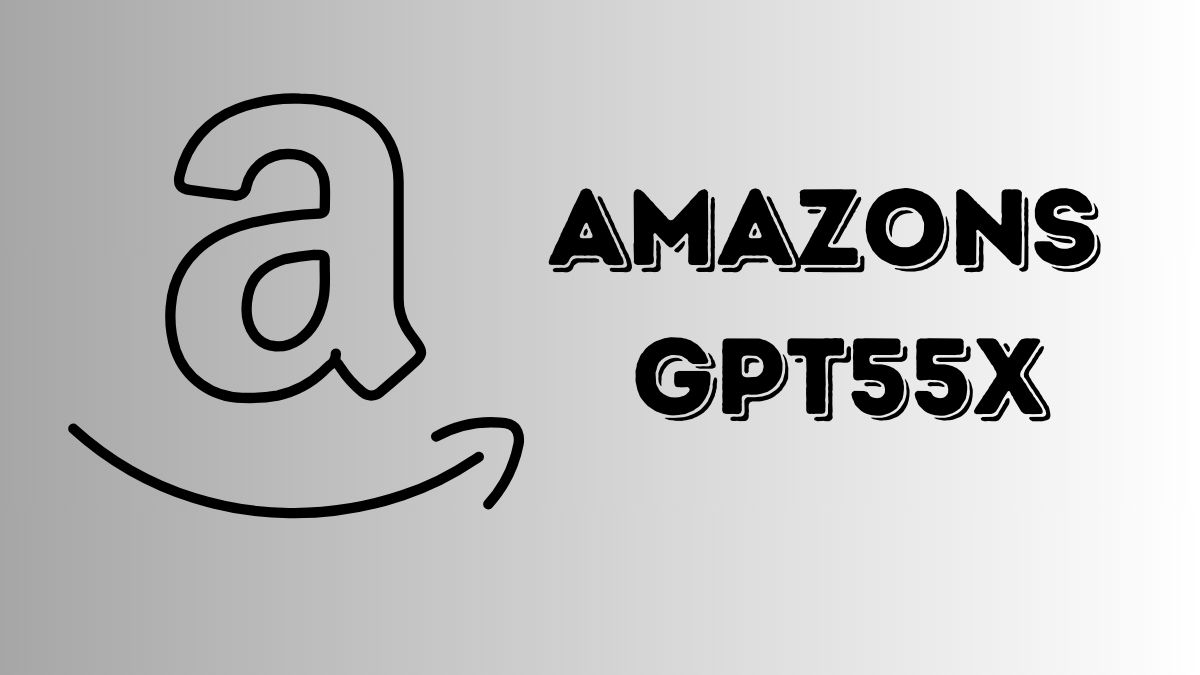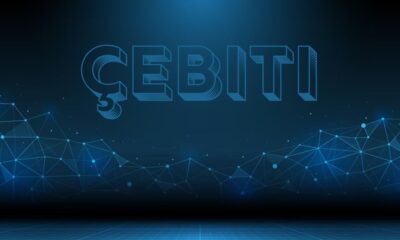Technology
Amazons GPT-55X: Revolutionizing Language Models

A pioneer in the field of language models, amazons gpt55x is changing the game when it comes to how we engage with machines. This extraordinary language model is examined in this article along with its features, history, and far-reaching ramifications.
Evolution of Language Models
The evolution of language models has been remarkable, progressing from simple rule-based systems to complex neural networks. At the very top of this evolutionary chain is amazons gpt55x, which stands for a giant leap forward in NLP.
Features and Capabilities
The GPT-55X stands out from the crowd because to its many useful features. It is a linguistic superpower thanks to its extensive knowledge base, enhanced coherence, and contextual understanding.
Applications in Various Industries
Marketing, customer service, and content production are some of the ways that businesses are utilizing GPT-55X. The way industries function has been revolutionized by its ability to comprehend context and produce content that resembles human writing.
Technical Advancements
When it comes to the nuts and bolts, GPT-55X is head and shoulders above the competition because to its superior architecture and improved training methods. The end product is an exceptionally efficient and effective language model.
User Experience and Feedback
Practical uses highlight the beneficial effects of amazons gpt55x. Users have noted that it has greatly enhanced their communication and production, and they commend its correctness and adaptability.
Challenges and Concerns
The employment of strong language models raises ethical difficulties, despite the obvious benefits. These concerns are discussed in this section, along with the steps done to guarantee responsible deployment.
Future Implications
The GPT-55X is an important step toward what’s to come. Language models are already heavily influential in defining technology environments, and predictions indicate that this will only become worse.
The Role of Amazons Gpt55x in SEO
All new opportunities have opened up with GPT-55X for content creators and marketers. It is changing the face of search engine optimization (SEO) due to its effects on algorithmic changes and content creation tactics.
Educational Significance
The GPT-55X makes a difference in language tutoring and individualized learning programs in the field of education. A great asset to the classroom, it can adjust to different students’ preferred methods of learning.
GPT-55X vs. Competitors
When compared to other state-of-the-art language models, amazons gpt55x stands out. Its distinctive features make it a serious threat to established players in the NLP industry.
Global Accessibility and Multilingual Support
Global communication is made easier with GPT-55X, which breaks down linguistic boundaries. Its ability to speak more than one language makes it useful in settings where the spoken languages are varied.
Security Measures
Security is of the utmost importance when it comes to any strong technology. GPT-55X has strong security features to prevent unauthorized access and keep user data safe.
Innovation and Collaboration
It is clear that Amazon is dedicated to innovation with amazons gpt55x. Language processing technology continues to progress thanks to collaborations and partnerships.
Conclusion
When it comes to language models, amazons gpt55x is revolutionary. Its influence will be felt in many fields, including business, academia, and the media, and it will pave the way for even greater advancements in language processing in the future.
FAQs
Is GPT-55X available for public use?
Although it is being integrated into numerous applications, GPT-55X is not publically accessible at the moment.
How does GPT-55X handle multilingual communication?
GPT-55X is built to comprehend and produce material in various languages, making it more accessible worldwide.
What security measures are in place to prevent misuse?
To make sure GPT-55X is used ethically and responsibly, Amazon has put in place tight security measures.
Can GPT-55X be used in educational institutions?
Yes, GPT-55X can be used in the classroom to help provide more tailored lessons for each student.
How does GPT-55X impact content creators and SEO strategies?
When it comes to SEO techniques, GPT-55X is a game-changer because it provides a more sophisticated and context-aware approach to content generation.
Technology
Transforming Data Management: The Power of Unified Storage Solutions

Against the vivid backdrop of the Information Age, businesses are compelled to grapple with an escalating volume of data. With this burgeoning digital footprint, the need for sophisticated and versatile data management strategies is more pronounced than ever. Unified storage emerges as a hallmark solution, integrating the storage of different data types into a singular, efficient system. This approach is gaining traction as a cornerstone for accommodating a variety of data-intensive applications, from small-scale ventures to large corporate enterprises, bringing a wealth of benefits through its adoption.
Understanding Unified Storage
Unified storage, an innovative data storage model, is designed to concurrently handle block data (commonly used for database fields or email servers) and file data (such as documents or media files) within a single cohesive storage platform. Unified storage consolidates these different streams, unlike fragmented traditional methods that require distinct systems for various data types—such as network-attached storage (NAS) for files and storage area networks (SAN) for blocks. This consolidation radically simplifies the storage infrastructure, reducing the administrative burden and enhancing organizational efficiency. As a testament to its growing significance, definitions and uses of unified storage are increasingly featured in contemporary IT discourse.
The Advantages of Unified Storage Systems
Adopting unified storage systems introduces a realm of advantages, chief among them being heightened data access and management efficiency. Through centralization, IT departments can streamline operations, simplify user accessibility, and mitigate the complexities historically associated with maintaining multiple storage silos. Reinforcing cost-effectiveness, this technology scales to keep pace with expanding data demands without necessitating excessive capital expenditures. Furthermore, unified storage solutions are frequently embedded with advanced features for data protection, offering robust redundancy, snapshot capabilities, and resilient disaster recovery protocols. These traits collectively foster a secure environment for business-critical data, vitally supporting organizational resilience and operational integrity.
Unified Storage in Different Industries
Unified storage’s adaptability makes it a versatile asset across various industrial landscapes. The healthcare sector, for instance, utilizes these systems to secure sensitive patient information while ensuring swift data retrieval compliance with stringent regulatory frameworks. Financial institutions deploy unified storage to manage intricate databases, facilitating real-time transaction processing and expansive record-keeping. Additionally, e-commerce platforms leverage the high-performance capabilities of these solutions to maintain extensive product catalogs and customer data, underpinning the critical function of unified storage and seamless online shopping experiences.
The Technology Behind Unified Storage
Technically speaking, unified storage frameworks exhibit an advanced architectural design that accommodates various file systems and network protocols. This inherent flexibility assures compatibility with existing IT systems and future-proofs investments as storage needs evolve. A crucial aspect of this dynamism is the prevalence of software-defined storage (SDS), which separates storage resources from physical devices, fostering an agile and modular approach to management. SDS accelerates the provisioning and automation of storage, enabling enterprises to swiftly adapt to changing requirements without the rigidity of hardware-dependent solutions.
Implementing a Unified Storage Strategy
The initial step toward integrating a unified storage solution encompasses a comprehensive assessment of existing data storage mechanisms and a projection of future requirements. Decision-makers must delineate strategic imperatives, articulating objectives for data accessibility, disaster recovery, and capacity planning. Upon defining these parameters, the meticulous deployment process can begin, involving meticulous planning and often necessitating astute guidance from specialized IT professionals. Throughout this phase, navigating the intricacies of data migration and ensuring seamless compatibility with legacy applications presents potential hurdles. By enlisting expert assistance, businesses can mitigate risks and streamline the transition to this advanced storage paradigm.
Performance Metrics and Unified Storage
Assessing the performance and tangible impact of a unified storage solution is an exercise of paramount importance. Organizations track performance metrics, including data throughput, response time, and system reliability, to quantify the system’s contributions to business operations. Through diligent monitoring, enterprises can detect areas of improvement and proactively address them, safeguarding an optimum level of service delivery. Furthermore, understanding these metrics is vital for verifying the fulfillment of service-level agreements (SLAs) and maintaining overarching trust in the storage solution implemented.
Future Trends in Data Storage and Management
The data storage domain is characterized by continuous evolution, with emerging technologies and approaches reshaping the tools and strategies at the disposal of businesses. Notably, unified storage solutions are poised to reap the rewards of artificial intelligence and machine learning, furthering the advancement of automated and intelligent data management systems. Influential market analysis indicates a substantial upsurge in reliance on unified storage infrastructure bolstered by these next-generation technologies. Such market predictions underscore the criticality of unified storage in the expansive ecosystem of data storage solutions, indicating a robust trajectory for the industry’s future.
Choosing the Right Unified Storage Vendor
Selecting a competent and reliable vendor remains pivotal when considering the leap to a unified storage system. Organizations must scrutinize potential vendors through a comprehensive lens, evaluating their offerings in terms of performance, resilience, and the level of post-deployment support. Stakeholder reviews, marketplace standing, and long-term vendor stability provide insights into the track record of service providers, thereby informing a well-rounded decision-making process. By prioritizing attributes that resonate with corporate values and operational difficulties, businesses can forge partnerships with vendors that are not simply transactional but are genuinely collaborative, nurturing sustained growth and technological empowerment.
In summary, harnessing the potential of unified storage is not merely an IT preference but a strategic imperative for businesses that covet agility and robustness in their data management practices. With its ability to transcend traditional storage limitations, unified storage emerges as an enabler of innovation, a catalyst for efficiency, and a foundational pillar for data-centric enterprises seeking to thrive in an increasingly digitized business milieu.
Technology
Exploring the Benefits and Considerations of Wire-O Binding for Document Presentation

Document presentation plays an integral role in professional communication. The method used to bind pages can significantly affect the usability and perception of the information packaged within. Wire-O binding, also known as double loop or wire binding, has become increasingly popular due to its neat, professional look and versatile application across various document types. The pages in a wire bound book printing are held together by loops of wire that allow accessible page turning and lay-flat capability, which is particularly useful for reference materials, presentations, and reports.
The History of Document Binding
Tracing the lineage of document-binding offers a fascinating glimpse into how the preservation and presentation of documents have evolved. Early techniques were primarily functional, designed to keep scrolls and later codices intact. With the advent of the printing press, hardcover binding provided the durability needed for the increasing number of books, and the 20th century brought a boom in various binding techniques, catering to aesthetics and practicality. Wire-O binding emerged as a significant innovation, marrying elegance and utility, allowing the proliferation of reports, guides, and booklets in schools, offices, and conferences.
The Aesthetics of Wire-O Booklets
Documents should not be underestimated in their visual impact as physical embodiments of content. Wire-O booklets boast a clean, sophisticated edge that enhances the professionalism of the material. Whether presented in a boardroom or displayed on retail shelves, their aesthetic quality draws the eye and invites interaction. The metallic spiral infuses a contemporary feel, while the ability to customize the cover design enables complete coherence with corporate branding or campaign themes. The result is a premium-quality document that reflects well on the provider and engages the user.
Functionality and Usability
In practical terms, Wire-O binding serves users well beyond mere aesthetics. The most notable feature is the 360-degree rotation of bound pages, which allows for full-page repositioning without stress to the spine – making it possible to keep the booklet open to a particular page hands-free. This feature proves invaluable in environments where referencing material quickly and efficiently is crucial, such as cookbooks in kitchens, workshop instruction manuals, or study guides in classrooms. Furthermore, the binding wire’s resilience ensures longevity, resisting wear and tear from frequent use.
Choosing the Right Binding for Your Project
Several considerations come to the fore when selecting the most suitable binding option for a project. The type of document, the intended audience, the expected lifespan, and, of course, the budget are all instrumental factors. Wire-O binding is typically ideal for documents that balance a high-end look and functionality. Professional presentations, proposals, manuals, and agendas are just a few examples where Wire-O binding can provide the necessary edge. Additionally, it can cater to various sizes, accommodate many pages, and offer a more substantial feel than staple-bound or loose-leaf papers.
The Process of Wire-O Binding
Creating documents with Wire-O binding is a precise process involving carefully considering both form and function. The appropriate paper weight, cover design, and wire are meticulously chosen to suit the purpose and aesthetics of the finished product. Suppose you want to lessen your environmental effect and satisfy customers who are growing more environmentally conscious. In that case, you must also stay updated with the latest sustainability and materials advancements. Doing so ensures that their documents are visually appealing, durable, and environmentally responsible.
Advantages of Wire-O Booklets for Certain Industries
Some sectors stand to benefit more prominently from Wire-O booklets. Educational institutions, for instance, often require materials that students can use extensively and refer to easily during learning activities. Likewise, businesses may opt for Wire-O binding when producing marketing content that needs to lay flat, such as catalogs or lookbooks. Moreover, quickly accessing information makes Wire-O-bound documents particularly advantageous for conference attendants or workshop participants. Considering the needs of more niche markets, self-publishers find this binding method appealing for its professional finish and the value it adds to their published works. As a testament to this approach’s versatility, self-published authors can leverage Wire-O binding effectively for volumes that range from poetry to how-to guides, enjoying the mix of beauty and practicality it offers.
Creative Customizations for Wire-O Binding
One of the perks of Wire-O binding is the array of creative customizations available. The option to vary the sizing, incorporate die-cut covers for a unique silhouette, and use specialty papers to accentuate the tactile sensation encourages creators to think outside the box. Even the wire can be customized in color to match branding elements or to complement the design palette of the booklet’s cover. These thoughtful details contribute to a brand’s storytelling and identity, presenting a document and a memorable experience.
Case Studies: Effective Uses of Wire-O Booklets
Real-world applications offer demonstrable evidence of Wire-O booklet efficacy. In the professional sphere, high-stakes pitches and strategy documents are often Wire-O bound to ensure ease of presentation and durability. Presenting work in Wire-O portfolios, which can lay flat on any page without the risk of the booklet snapping shut, allows creative professionals, such as graphic designers and photographers, to showcase their work visually. In the technical realm, Wire-O binding accommodates the revision-friendly nature of instructional guides and manuals, where information might require frequent updates.
Future Trends in Document Binding
Although current trends in document binding highly favor Wire-O, the future beckons with the promise of further innovations that consider changing needs and advancing technologies. As the digital domain continues to grow, the physical presentation of documents remains indispensable in many scenarios. Yet, the question of how digital advancements will integrate with traditional binding methods forms an intriguing dialogue within the printing and publication industry. With that said, the tactile appeal and practical functionality of Wire-O binding are likely to sustain its popularity for the foreseeable future.
Technology
Transforming Speech into Text: The Benefits of Audio Conversion

The Rise of Audio Conversion
The proliferation of digital content has increased demand for technologies that can bridge different media formats. Enter the world of audio conversion technology—specifically, tools that employ an audio to text converter. This sophisticated software enables the transformation of spoken words into written form, providing a treasure trove of benefits for content creators, marketers, and the wider audience.
Audio-to-text conversion has become especially significant in an era where podcasts and voice memos are as commonplace as articles and books. It provides a seamless way to repurpose oral content for various platforms, ensuring that a single format does not bind valuable insights and discussions and can be consumed differently. By liberating the content from the constraints of audio-only mediums, these tools grant creators the flexibility to adapt and curate their work for diverse contexts, ranging from print to social media, thereby multiplying its reach and impact.
The rapid advance of audio conversion software has been driven by an uptick in voice-driven content and the recognition of its potential to streamline complicated workflows. With the press of a button, ideas, interviews, and debates captured in audio can now find new life as text, infusing traditional methods with the speed and versatility of digital transformation. This shift enhances the productivity of individuals and organizations and reflects a broader trend towards integrated multimedia engagement, where content fluidly traverses different formats to optimize consumption and comprehension.
Streamlining Content Creation
Leveraging audio conversion technology can vastly improve the efficiency of content production. For writers, journalists, and educators, the capability to quickly convert interviews, lectures, and brainstorming sessions into editable text is an absolute game-changer. This speeds up the content creation cycle and enables more focus on fine-tuning the message rather than the mechanics of transcription. The intellectual effort can thus be redirected from transcription to creative and analytical endeavors that add more value to the content.
Moreover, the written content generated from audio can be easily edited, formatted, and distributed across many channels. Audio transcripts are the starting point for various content types, from blog posts to social media updates, making them a versatile asset in any content strategy. This transformation is particularly beneficial in a multi-platform publishing environment where consistency and speed are paramount. Whether it’s a thought leader expressing opinions on different channels or an educational institution providing resources for varied learning modalities, audio conversion is a crucial intermediary that enables dissemination with unprecedented ease.
Audio conversion helps creators stay ahead of the curve as content continues to be consumed in increasingly diverse ways. The capability to feed today’s content-hungry audiences with high-quality, versatile materials has never been more accessible. The essence of compelling stories and informative discourse can be captured without delay, ensuring timely delivery and engagement with the intended audience. Audio conversion empowers creators to maintain a consistent and impactful presence across the digital landscape by reducing the friction typically associated with content production.
Accessibility and Inclusion
Transcription also plays a critical role in making content accessible to all, including individuals with hearing impairments or those who prefer reading over listening. Content creators practice inclusivity by providing a text version of audio, extending their reach to audiences that might otherwise be excluded from the conversation. This commitment to inclusivity enhances the audience experience and enriches the societal discourse by ensuring that all voices can be heard and all opinions considered.
Furthermore, transcripts can be used to create video subtitles, enhancing comprehension and increasing viewer engagement. Accessible content benefits the audience and reflects positively on the creator’s commitment to a diverse and inclusive community. While magnifying the scope of content reach, these efforts also demonstrate social responsibility and adherence to web accessibility standards, making the digital world a more equitable place for diverse audiences.
In the context of global accessibility, audio conversion bolsters the capacity of individuals from varying backgrounds to engage with content in their preferred manner. Whether it’s enabling students to peruse educational material in text form or providing the deaf and hard-of-hearing community with equal access to digital media, transcription technologies serve as a bridge that connects various facets of society. The robust text rendered from audio can be further manipulated to suit different needs, like creating braille versions for the visually impaired or translated versions for non-native speakers, thereby solidifying the indispensable role of audio conversion in fostering a more inclusive digital environment.
SEO Advantages
From an online visibility standpoint, audio transcripts contribute significantly to SEO. When content is available in text form, it is more readily indexed by search engines, thus improving a website’s search rankings. This makes it easier for potential readers to find the material, leading to increased traffic and engagement. Moreover, the text provides additional opportunities to incorporate keywords and phrases that potential audiences may use in their search queries, further aligning the content with SEO best practices.
Transcripts embellished with keywords can propel content to the first page of search results—a coveted spot for any digital content creator. This technique directly ties into enhanced web presence and can be a strategic tool in digital marketing efforts. The discoverability of content can be the linchpin of its success, and the nuanced use of transcription as part of an SEO strategy can be transformative in facilitating greater visibility and audience reach for creators and businesses alike.
This integration of transcript-based SEO strategies has been demonstrated by the infusion of written content into audio and visual media. For podcasts, transcribing episodes gives creators a foundation for creating impactful show notes, descriptions, and promotional materials that enhance the podcast’s searchability and attractiveness to new listeners. Similarly, for video content, leveraging transcriptions yields metadata that can be meticulously optimized to attract target demographics, thereby increasing the content’s overall reach and resonance in the digital domain.
Accuracy and Fidelity
A fundamental aspect of transcription is the accuracy of the text produced. It is vital for maintaining the speaker’s intended message and nuanced tone. While automated transcription services offer convenience, they may not always capture the complexity of human language, including dialects, idiomatic expressions, and colloquialisms. The essence of spoken communication often lies beyond mere words, embedded in the tone, pitch, and rhythm of speech, which automated systems can struggle to interpret correctly.
Transcription fidelity is paramount for sensitive or critical content, such as legal proceedings or medical reports. In these cases, human transcribers are often preferred for their ability to detect and interpret subtle linguistic cues that machine transcription might overlook. The meticulous attention to detail human transcribers bring ensures that the final transcript is a textual replica of the audio and a faithful representation of the original context and sentiment.
In realms where precision is non-negotiable, such as journalism and academia, inaccuracies in transcription can have far-reaching consequences. Journalists rely on faithful transcriptions to back their reporting with credibility, while academics require them to ensure integrity in research and discourse. Consequently, transcoding spoken content into accurate textual form is not simply a matter of convenience but one of ethical responsibility and professional diligence. Achieving a balance between expedience and precision often necessitates the involvement of skilled human transcribers to review and refine the transcripts, embedding quality and trustworthiness into the textual output.
Challenges and Limitations
Despite its array of benefits, audio conversion has challenges. One of the most significant is dealing with poor audio quality or heavily accented speech, which can impede the accuracy of automated transcription software. Background noise, overlapping conversations, and low-fidelity recordings are just a few hurdles that can hinder the performance of even the most advanced speech recognition technologies. This often necessitates manual intervention to ensure the final transcript is free of errors and omissions, injecting additional time and effort into the transcription process.
Furthermore, the transcription industry must continuously evolve to keep up with language processing advancements and address emerging ethical data privacy and usage considerations. As voice-enabled devices and services surge in popularity, the collection and use of audio recordings for transcription must be navigated with a keen understanding of user consent and privacy laws. Respecting the privacy of individuals and maintaining confidentiality in transcription practices safeguards not only the service provider’s reputation but also the users’ rights and interests.
The importance of accurate and ethical transcription practices must be supported for those invested in content integrity and the potential for wide-reaching communication. Ultimately, the interplay between rapidly advancing technology and human expertise is shaping the future of content creation—one where every spoken word has the potential to become part of the greater digital narrative. As we look towards the horizon of this evolving field, adopting best practices and continuously improving tools and processes will ensure that audio conversion remains a dependable pillar in the digital content ecosystem.
-

 Entertainment2 months ago
Entertainment2 months agoUnveiling the World of HDToday
-

 Technology2 months ago
Technology2 months agoUnveiling the Wonders of Teltlk Technology
-

 Entertainment2 months ago
Entertainment2 months agoRecord of the Mightiest Lord Chapter 1: Unveiling the Epic Saga
-

 Business2 months ago
Business2 months agoThe Ultimate Guide to High Risk Merchant Services
-

 Technology2 months ago
Technology2 months agoÇebiti: Corporate Operations with an Integrated AI Platform
-

 Business2 months ago
Business2 months agoUnlocking Opportunities with GovDeals – Liquidity Services Marketplace
-

 Sports2 months ago
Sports2 months agofutbol libre: Embracing the Joy of Unconventional Football
-

 Health2 months ago
Health2 months agoIlluminate Your Scans: Unveiling the Magic of Luminous Scans in Modern Imaging




















